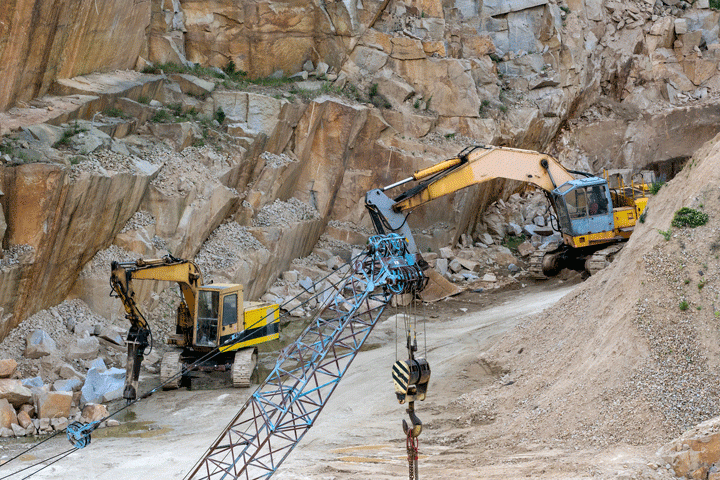A Trip With Granite Quarries in South Africa: Unveiling Nature's Artistry
A Trip With Granite Quarries in South Africa: Unveiling Nature's Artistry
Blog Article
Unearthing the Rich Background and Lasting Practices of Granite Quarrying
As we base on the precipice of revealing the complex tapestry of granite quarrying, a journey via time exposes not just the physical act of removing stone yet additionally the cultural and historical significance woven into the very fabric of this practice. From the old origins that laid the foundation for contemporary quarrying strategies to the sustainable techniques that are shaping the future of this sector, each chisel mark on granite surfaces informs a tale waiting to be unearthed (granite quarries in south africa). The legacy of granite quarrying stretches much beyond plain extraction; it is a testimony to human resourcefulness, resilience, and the enduring appeal of this stunning rock
Old Origins of Granite Quarrying
Dating back to ancient human beings, the practice of quarrying granite has been an indispensable part of human background and building advancement. The earliest proof of granite quarrying go back to ancient Egypt, where large pyramids and elaborate sculptures were crafted from this long lasting rock. The Egyptians utilized primitive tools to remove granite blocks from quarries, showcasing the significance of this product in their huge buildings.
Progressing in background, the Greeks also made considerable payments to the quarrying of granite. The Greeks made use of granite in various architectural marvels, such as holy places and statuaries, demonstrating their ability in shaping and carving this durable stone. The Romans even more improved the methods of quarrying granite, using advanced devices like chisels and hammers to essence and form granite for their legendary structures.
With the centuries, the method of quarrying granite has advanced, with modern innovations boosting effectiveness while preserving the classic allure of this natural rock - granite quarries in south africa. From ancient people to modern building contractors, the legacy of granite quarrying proceeds to shape our world
Evolution of Quarrying Techniques
The advancement of quarrying methods has been marked by a constant progression in the direction of better effectiveness and accuracy in drawing out granite. From the simple approaches utilized by our ancestors to the sophisticated modern technologies used in modern quarrying procedures, the market has undertaken considerable advancements. Early quarrying strategies involved manual work with fundamental devices such as blades, hammers, and wedges to extract granite blocks from the planet. As worlds proceeded, methods like fire-setting and primitive explosives were presented to help with the removal process.
In even more recent times, the advent of equipment transformed the quarrying industry, enabling quicker removal prices and enhanced productivity. Technologies such as ruby wire saws, high-pressure water jets, and pneumatically-driven drills have actually come to be standard in modern-day quarries, permitting accurate cutting and reduced waste. In addition, innovations in computer-controlled equipment and 3D modeling have actually maximized quarrying procedures, leading to very little ecological influence and boosted sustainability practices. As the demand for granite remains to increase, the evolution of quarrying methods remains integral to meeting market needs successfully and sustainably.
Social Importance of Granite
Granite holds a profound social value throughout different civilizations due to its enduring visibility in building work of arts and respected monoliths. The cultural significance of granite extends past its physical qualities; it symbolizes durability, stability, and eternity, making it a symbol of enduring legacies and practices.

Sustainable Practices in Quarrying
Among the abundant background of granite this link quarrying and its cultural importance exists an expanding focus on lasting methods within the sector. As environmental understanding and issues regarding source deficiency have actually heightened worldwide, the quarrying field has significantly welcomed sustainable techniques to lessen its effect on the environment and surrounding areas.

Furthermore, improvement and recovery of quarry websites post-extraction are indispensable to sustainable practices. By bring back quarried locations to an all-natural or useful state, such as creating wild animals environments or entertainment spaces, quarriers can balance out the environmental footprint of their operations and contribute favorably to the neighborhood ecosystem.
Heritage of Granite Quarrying
With a historic backdrop steeped in workmanship and commercial development, what withstanding effect has granite quarrying left on the landscape of contemporary society? The legacy of granite quarrying goes beyond mere extraction practices; it has formed building wonders, Continued urban landscapes, and social heritage worldwide. The sturdy nature of granite has made it a preferred option for monoliths, buildings, and infrastructure, standing as a testament to the ability and virtuosity of quarry workers across generations.
Furthermore, the economic footprint of granite quarrying can not be ignored. The market remains to supply employment chances and drive regional economies in regions where granite removal is common. It has likewise stimulated technological advancements in quarrying methods and tools, leading to a lot more reliable and lasting practices.
In terms of sustainability, the tradition of granite quarrying includes initiatives to mitigate ecological effects through reclamation jobs and accountable resource management. By balancing economic interests with ecological stewardship, the sector strives to make sure that future generations can proceed to take advantage of this enduring natural resource.
Final Thought

Report this page